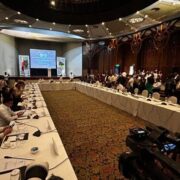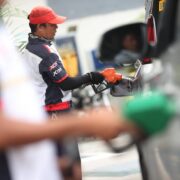Indigenous peoples’ rights: The Asean paradox

Kathmandu—Southeast Asia has not been at the forefront of promoting human rights, much less the rights of indigenous peoples, where the region’s record is even darker and more concerning. Indonesia, Laos, Thailand, and Vietnam are among those that fare the poorest in this aspect.
The Asean Human Rights Declaration, itself a questionable and weak document, does not do justice to the indigenous peoples of the region either, grossly ignoring them and neglecting their rights. This, despite all Asean member states voting in favor of adopting the United Nations Declaration on the Rights of Indigenous Peoples in 2007.
Indigenous peoples are custodians of local biodiversity and different ecosystems, a key constituent group for the preservation of the environmental and ancient traditions in Southeast Asia. Their role is paramount to ensuring that the region and the world will be able to meet the Sustainable Development Goals of Agenda 2030.
While Malaysia recognizes its indigenous peoples as Orang Asal natives or Orang Asli, it still faces challenges in respecting and protecting their rights. This is illustrated by the ongoing encroachment of customary lands in Sabah by China-based Kibing Group’s silica sand mining project. Considered an energy transition project as silica is used to manufacture solar panels, it has disrupted the lives of indigenous communities and the marine biodiversity ecosystem of the beach.
Malaysia’s chairmanship of Asean provides the region with the occasion to take a bold decision of elevating the much-ignored agenda of indigenous peoples within its policymaking. Prime Minister Anwar Ibrahim should thus promote an overall debate about the current status of indigenous peoples’ rights, especially as the bloc is drafting what is popularly known as the Asean Declaration on Environmental Rights.
Robeliza Halip, the interim executive director of the Right Energy Partnership with Indigenous Peoples (REP), whom we interviewed a month ago, said that she hopes Malaysia’s representative to the Asean Intergovernmental Commission on Human Rights (AICHR) and its present chair, Edmund Bon Tai Soon, “will champion the strengthening of the protection mandate of the AICHR and not just the ‘vague’ promotion of human rights in general.”
She added: “We have to strengthen the level of engagement of the AICHR, at the minimum, with indigenous peoples through the conduct of consultations to understand (their) situation … (and) for the AICHR to be able to effectively address our human rights concerns.”
The REP works to promote respect of the rights of indigenous peoples in the transition to a net-zero society, and advocates a bottom-up, indigenous peoples-led shift to renewable energies.
Some concerns have also been raised on the Asean Declaration on Environmental Rights: “The draft does not address the rights of indigenous peoples, including their rights to their ancestral lands, territories, waters and coastal seas and other resources, and the role of indigenous peoples’ knowledge,” reads an advocacy paper recently published by the Stockholm Environment Institute.
Halip echoed such alarm: “Major lobby work needs to be done with the respective environment ministries of Asean countries as they are the ones heavily involved in that process. With Malaysia chairing the AICHR and with some new AICHR representatives, we hope that they will strengthen human rights and environmental protection in the declaration,” she said.
“Particularly for indigenous peoples, it is important that their collective rights as enshrined in the UN Declaration on the Rights of Indigenous Peoples are clearly stipulated … (The) recognition and strengthening of their natural resource management systems, and their right to free prior and informed consent (must also) be implemented for any policies or projects that may impact their territories and peoples,” Halip added.
The draft of Asean Vision 2045, a strategy document that will define how this community of nations will develop over the next decades, should reaffirm the role of indigenous peoples in the future Asean.
A possible approach could be the creation of a permanent mechanism of indigenous peoples within Asean, one that is fully recognized by its member states but autonomous from Asean and its secretariat and completely led by indigenous peoples from the region. Indigenous peoples’ representatives through the mechanism could also hold official interactions with relevant Asean organs on matters of their concern.
Even if the resolutions of such a body may not be binding, this would be a game changer not only for the indigenous peoples of the region, but for all of Asia and beyond. The Jakarta Post/Asia News Network
—————-
Prabindra Shakya is the convenor of Asia Indigenous Peoples Network on Extractive Industries and Energy (AIPNEE). Simone Galimberti is a freelance columnist focusing on human rights, development, and regional integration in Southeast Asia.
—————-
The Philippine Daily Inquirer is a member of the Asia News Network, an alliance of 22 media titles in the region.

















